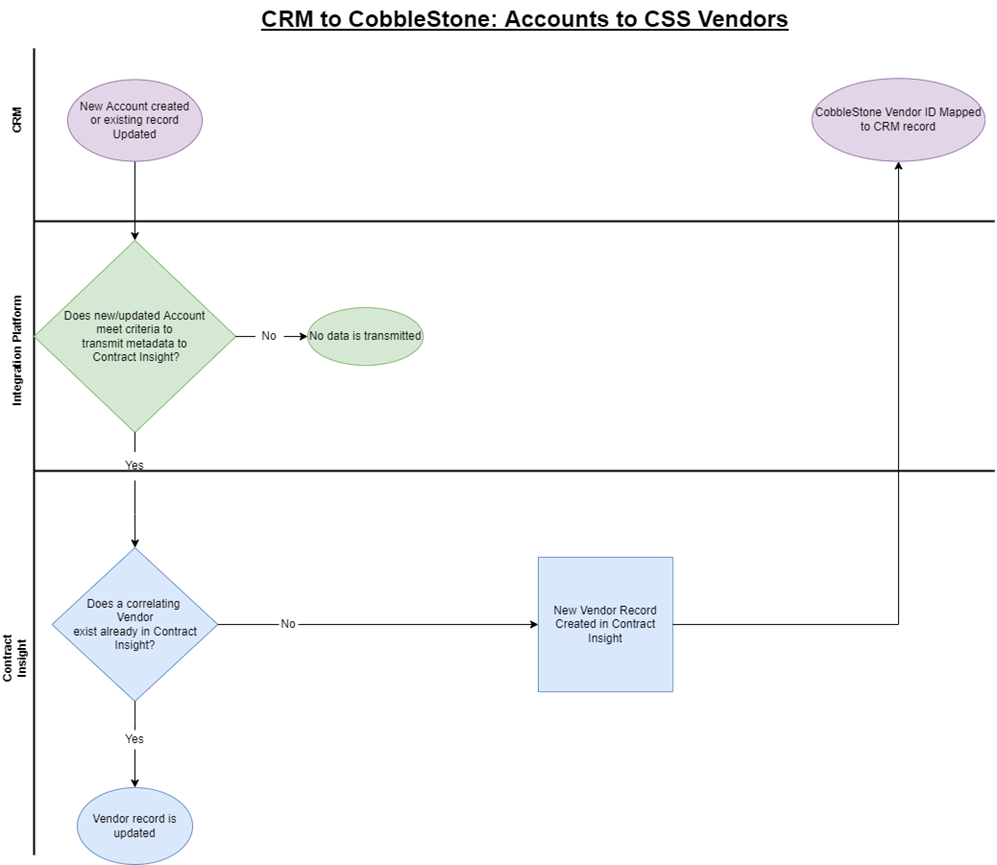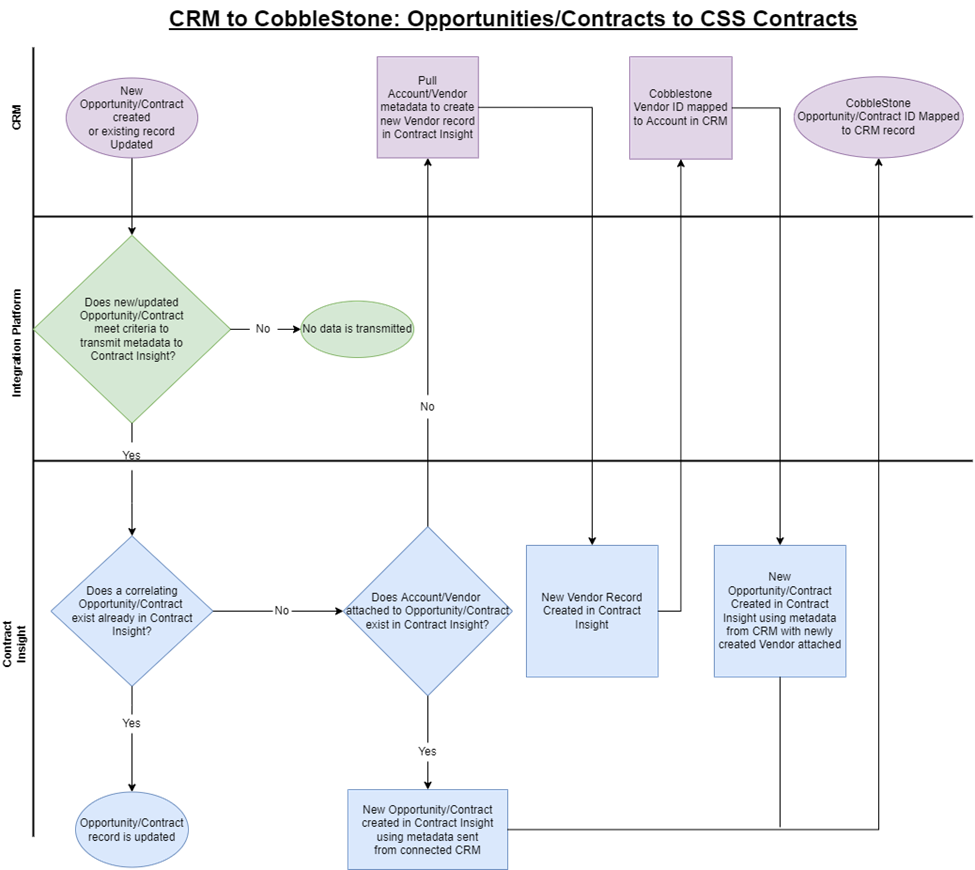- 02 Nov 2023
- 2 Minutes to read
- Print
- DarkLight
CRM System Integration with CobbleStone Software
- Updated on 02 Nov 2023
- 2 Minutes to read
- Print
- DarkLight
CRM Integrations
CRM systems are systems that can perform many important functions. Some examples of popular CRM systems are Oracle NetSuite, Salesforce, HubSpot, and Monday.com.
Common Use Case Scenarios
Typically, these CRM systems are integrated with the CobbleStone® platform to provide a myriad of functions. Some of the typical use case scenarios are: (diagrams below)
- Syncing Customer/Vendor Metadata between systems
- Syncing Contract/Contract Requests between systems
- Syncing Purchase Order/Invoicing between systems
- Automating workflow between systems
- Ex: Signed Contract in CobbleStone® triggers a Purchase Order in NetSuite
- Ex: New Opportunity in Salesforce triggers a Contract Request in CobbleStone®
Setup
Once connections are established linking the CobbleStone® platform with the client’s CRM system, the integration setup can commence.
Each system has its records identified by an Internal key. CobbleStone® will automatically auto-increment new records and assign them their own unique identifier (i.e. : 1st new vendor “123 Company” will have VendorID 1 when created. No new vendor records will have that VendorID). The same process applies to the records created within CRM systems (i.e. : Salesforce creates a Salesforce Account ID for new records within the system).
For the integration to properly function, a record sync must be performed. The unique identifier for a record must be appended to the correct record between systems. If a system cannot correctly identify existing records, the results are normally erroneous (i.e. : duplicate records, incorrect amendments, etc.).
To ensure that these keys match up, there are actions that can be taken:
- New fields must be created to store external record identifiers (Ex: Salesforce Account ID created in CobbleStone® system/CobbleStone® Vendor ID created in Salesforce)
- CSV Files containing the unique identifiers for records from one system matched to records in the integrated system and imported to be stored on those records
Integration Maintenance
To ensure ongoing automation and accuracy with these integrations, record syncing must remain constant. Depending on the frequency of record changes in a system, the frequency of the sync of the records between the systems must match.
Ex: New Opportunities in Salesforce need to be mapped into CobbleStone® as quickly as possible so proper steps can be taken. These triggers should be set to trigger in real-time when the Opportunity is created or updated or in intervals checking for new or updated Opportunities every 5-10 minutes.
Ex: Vendor records in a client’s Salesforce system rarely change. The sync of record metadata between that system and CobbleStone® system doesn’t need to happen as frequently. A daily or weekly sync may be all that is necessary.
CRM Systems Common Functionality Diagrams






.png)

